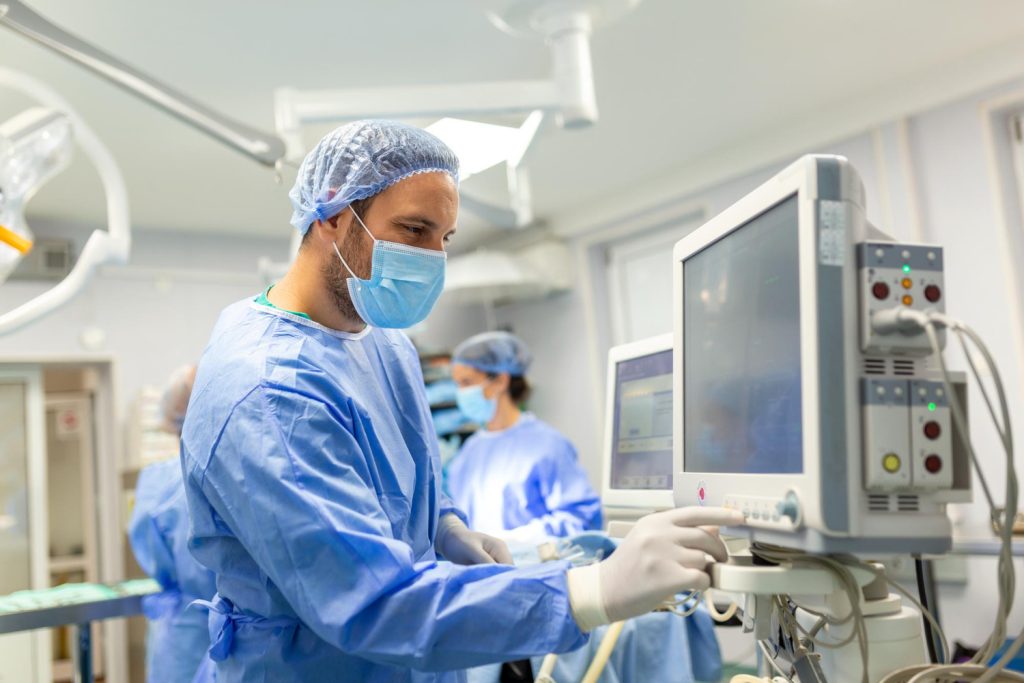A vast number of online and print resources are available. Here is a list of some that I like. Except for gotheextramile.com, I have no conflict of interest in these recommendations.
Books
I buy all my books on the Kindle App now. Most textbooks are bulky, and one can’t carry the books around. Kindle is an excellent App for reading on a phone/iPad or a computer. You can highlight, add comments and make flashcards. Your annotations synchronize across all your devices.
Primary Textbook (You may choose any)
You can sample books on Amazon or Kindle App. The Kindle App allows you to download a sample before you decide to buy. I recommend going through the table of contents and reading a couple of chapters before you decide to buy a book.
- Oxford Textbook of Critical Care, Second Edition, 2016 by Andrew Webb et al. While the second Edition is a few years old, it remains my favourite textbook in Intensive Care Medicine. The book is organized in small bite-size chapters of 2-4 pages each. There are 391 chapters, and each chapter covers one topic. It is also handy for writing short answer questions.
- Irwin and Rippe’s Intensive Care Medicine, Ninth Edition, 2024 by Lilly et al. The fourth edition of this classic textbook in intensive care was my primary resource when I took the exam, and I have remained a fan of this book. It is a detailed textbook. Intensive Care trainees should consider buying this book early in their training as it covers many fundamental topics, like procedure, quite well. Each chapter begins with a summary of key points and ends with a few MCQs with detailed feedback. With over 200 chapters, it has approximately 500 high-quality MCQs.
- Hall, Schmidt, and Wood’s Principles of Critical Care (5th Ed, McGraw Hill): A beautiful book, which is easy to read and has excellent illustrations and plenty of tables, which help summarize a topic nicely for those doing exams with short answer questions. Only a few key references are provided in the print version of the book, and remaining are available online. This makes the book look compact, but it is packed with much more information than its size would indicate.
Additional Books and Print Resources
In addition to a primary textbook, I recommend the following. These books are meant to improve your knowledge and understanding. Once you have acquired a deep understanding of the subject matter, success in the exam should follow automatically.
- Cases in Chemical Pathology. A Diagnostic Approach. R N Walmsley, L R Watkinson and H J Cain. This is an excellent book for interpretation of diagnostic tests, and I can’t recommend it highly enough. A case presentation format covers several diagnostic tests in detail (e.g., electrolytes, ABG, hormones, iron, etc.).
- Anyone Can Intubate by Christine E Whitten. It is an excellent book for beginners in anaesthesia and intensive care. I read this book after I became a consultant and found it highly educational (and delightful). It covers the essentials of airway management (Direct laryngoscopy, orotracheal intubation, verifying placement, etc. The book also covers several case scenarios in the final chapter – Boredom, Interrupted). It is a delightful book and a surprisingly easy read. I recommend it to the early-year trainees and to anaesthesia and intensive care educators.
- Guyton and Hall’s Textbook of Medical Physiology remains my favourite physiology textbook. Of course, intensive care and anaesthetic trainees need to supplement their knowledge of topics like respiratory, cardiovascular, neuromuscular physiology, etc., from other resources. I want to cite two specific examples here. I read about the pathophysiology of edema from this book, and it was an eye-opener. The Go the Extra Mile’s (GTEM) test on ‘How do we fight infection?’ is heavily influenced by the chapters on Innate and Adaptive immunity from this beautiful book.
- Nunn’s Applied Respiratory Physiology (Lumb and Thomas, Elsevier) is an authoritative guide for intensive care and anesthesia trainees. It is an extensive book. For those preparing for the exam, it is better to start reading this book a year before the exam. Reading more than once is required, and every time, some more veiled mysteries of respiratory physiology will be revealed. It is also an excellent text to learn about applied physiology of pregnancy, exercise, sleep, high altitude, hyperbaric medicine, etc. All in all, this is a delightful book, for the joy of learning.
- Stoelting’s Pharmacology & Physiology in Anesthetic Practice is an excellent book for pharmacology. In Intensive Care practice, however, we often need to read a little extra about certain commonly used drugs (e.g., Amiodarone, warfarin, heparin, vasopressors, etc., to name a few). Therefore, additional resources are required in addition to a primary pharmacology book. A few extra resources include:
- Antibiotics: ‘Infectious Diseases’ by Cohen, Powderley and Opal (Elsevier).
- Inotropes and Vasopressors: The Vasopressor and Inotrope Handbook by Eddie J Guttierrez – A delightful and easy-to-read book with abundant tips for bedside use of common vasopressors, novel agents (e.g., Angiotensin II) and rescue agents (Hydroxycobalamin and methylene blue). I bought this book specifically to read about angiotensin II, as it has an entire chapter on it, and I was overjoyed to read several other drugs from it.
- Acute Pain Management: Scientific Evidence by Australia and New Zealand College of Anaesthetists (Available at https://www.anzca.edu.au/resources/college-publications/acute-pain-management/apmse5.pdf)
- I would like to know what are your favourite resources for pharmacology. You can let me know by sending a message via WhatsApp below.
- Pilbeam’s Mechanical Ventilation and Workbook for Pilbeam’s Mechanical Ventilation Elsevier eBook on VitalSource. I have not read this book; I only browsed it and liked what I saw. This book comes with a workbook. Practising mechanical ventilation problems is an excellent way to learn. In addition, I would recommend:
- Ventilator Graphics: Identifying patient-ventilator asynchrony and optimizing settings (Kindle Edition): A relatively inexpensive yet valuable resource for learning ventilator graphics.
- Manual of the ventilator you use in your ICU will have pictures of the ventilator graphics of the machine you use.
- Principles And Practice of Mechanical Ventilation by Martin J Tobin (McGraw Hill): It is a voluminous reference. It is detailed and appropriate for specialists.
- Trainees should find a good resource for ventilator waveforms. Ventilators are our core business. Not knowing how to set a ventilator and interpret waveforms is not an option. Their importance extends beyond any exam.
- Anaesthesia Equipment: Principles and Applications by Ehrenwerth, Eisenkract and Berry.
- Physics in Anaesthesia by Middleton, Phillips, Thomas and Stacey. Explains the complex topics in physics in an easy-to-understand manner for physicians.
- ECMO in the Adult Patient by Vuylsteke, Brodie, Combes, Fowles and Peek (Cambridge Medicine): I had enormous difficulty learning ECMO until I found this book. It is one of my favourite books on all of intensive care, and this is about as high a recommendation as I can give.
- The Cardiohelp System (Maquet, Getinge Healthcare, Sweden)
- There are several other online and print resources for ECMO.
- ECG Made Easy is an excellent book for beginners, and it was my first ECG book. Beyond that, there are several online and print resources.
- ABG: I am unable to recommend a contemporary book on ABG. I read about arterial blood gases as a trainee from ‘Clinical Application of Blood Gases’ by Shapiro, Peruzzi and Templin, First Edition, 1993. I am unsure if another name or different authors now publish this book. It is an excellent book on respiratory physiology and ABG analysis, but I can’t recommend a 30-year-old book for such an important topic. But when I need a refresher in Acid-base physiology, this is the book that I return to. If you have a personal favourite, I would also like to know about it.
- Cases in Chemical Pathology (See above) cover ABG too.
- Kellum and Elbers have now edited Stewart’s Textbook of Acid Base. I have not read it, but I imagine it covers all aspects of Stewart’s approach to acid-base balance.
- Radiology: https://www.introductiontoradiology.net/ is a web-based resource that I like for radiology. It is run by the Department of Radiology at the University of Virginia. It has excellent pictures of sectional anatomy. As a trainee, I felt a lot more confident in interpreting CT scans after I browsed this website.
- Practical Cardiovascular Haemodynamics with Self-assessment Problems by Hanna and Clancy (Demos Medical) is an excellent book for interpreting waveforms, e.g., from CVP to pulmonary artery catheters. Such questions are of vital importance clinically and in exams like EDIC II.
- Rational Use of Intravenous Fluids in Critically Ill Patients by Malbrain, Wong, Nasa and Ghosh is an open access book which covers all aspects of intravenous fluid therapy in detail. It is a relatively new book, released in 2023. I have not read the book yet, It is on my list to read in the coming months. The list of topics it cover is exhaustive and every topic is covered in detail. It can be downloaded for free from Springer website (Link) . It is a monumental effort to write this book. And then to make it available for free, the authors and publishers of this book has done a great service to physicians all over the world; and to their patients.
- Clinical Fluid Therapy in Perioperative Setting by Robert G Hahn (Cambridge Medical).
- Procedures: If you have access to the New England Journal of Medicine, the section ‘videos in clinical medicine’ section under Multimedia is an excellent resource (https://www.nejm.org/browse/nejm-media-type/videos-in-clinical-medicine). It has professional videos, often with animations and accompanying complete text. In addition, the section on procedures in ‘Irwin and Rippe’s Intensive Care Medicine’ is excellent.
Online resources
-
- Over the last few years, I have interviewed a few trainees who secured a high rank in critical care exams. The following resources have been recommended by many. From time to time, I have benefitted from referring to all of these in my clinical practice.
- Deranged Physiology by Alex Yartsev (https://derangedphysiology.com/main/home)
- Life in the Fast Lane (https://litfl.com/)
- https://coreultrasound.com/
- https://emcrit.org/
- For latest articles and guidelines, I subscribe to the newsletter by Critical Care Reviews. It provides a weekly summary of interesting and important articles and guidelines. It saves a lot of time one would spend otherwise on searching new literature.
- Over the last few years, I have interviewed a few trainees who secured a high rank in critical care exams. The following resources have been recommended by many. From time to time, I have benefitted from referring to all of these in my clinical practice.
What does Go the Extra Mile Provide?
Go the Extra Mile and its companion App (Critical Care MCQ on App Store and Play Store) provide online MCQ in Critical Care Medicine for physicians and nurses. With over 3100 MCQ, it is, to my knowledge, world’s largest resource for original MCQ in Critical Care Medicine. Further information is here.
Sumesh Arora



